Its even more interesting when remembering that a certain John Kerry is part of the "muscular liberals" within the Democratic Party TTL. Instead of the OTL Vietnam hippie, he had become Scoop Jackson's protege TTL.Interesting to think about. Depending of course how you prefer your ideal Democratic Party to be
You are using an out of date browser. It may not display this or other websites correctly.
You should upgrade or use an alternative browser.
You should upgrade or use an alternative browser.
Blue Skies in Camelot (Continued): An Alternate 80s and Beyond
- Thread starter President_Lincoln
- Start date
Interesting differenceIts even more interesting when remembering that a certain John Kerry is part of the "muscular liberals" within the Democratic Party TTL. Instead of the OTL Vietnam hippie, he had become Scoop Jackson's protege TTL.
Hahah very true!Yeah because RFK and Reagan weren't man childs
That's the one! Very good debate imaoHere is the longest clip I could find on their OTL 1967 debate.
Chapter 137
Chapter 137 - Till the Walls Come Tumblin’ Down: Mo Udall’s Final Year in Office
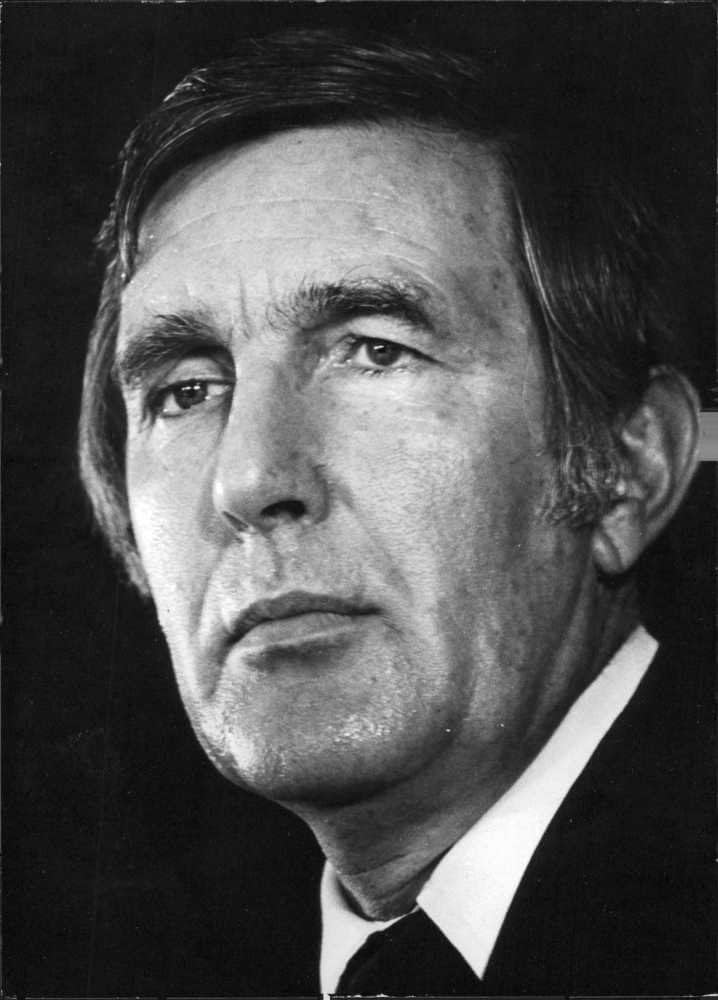
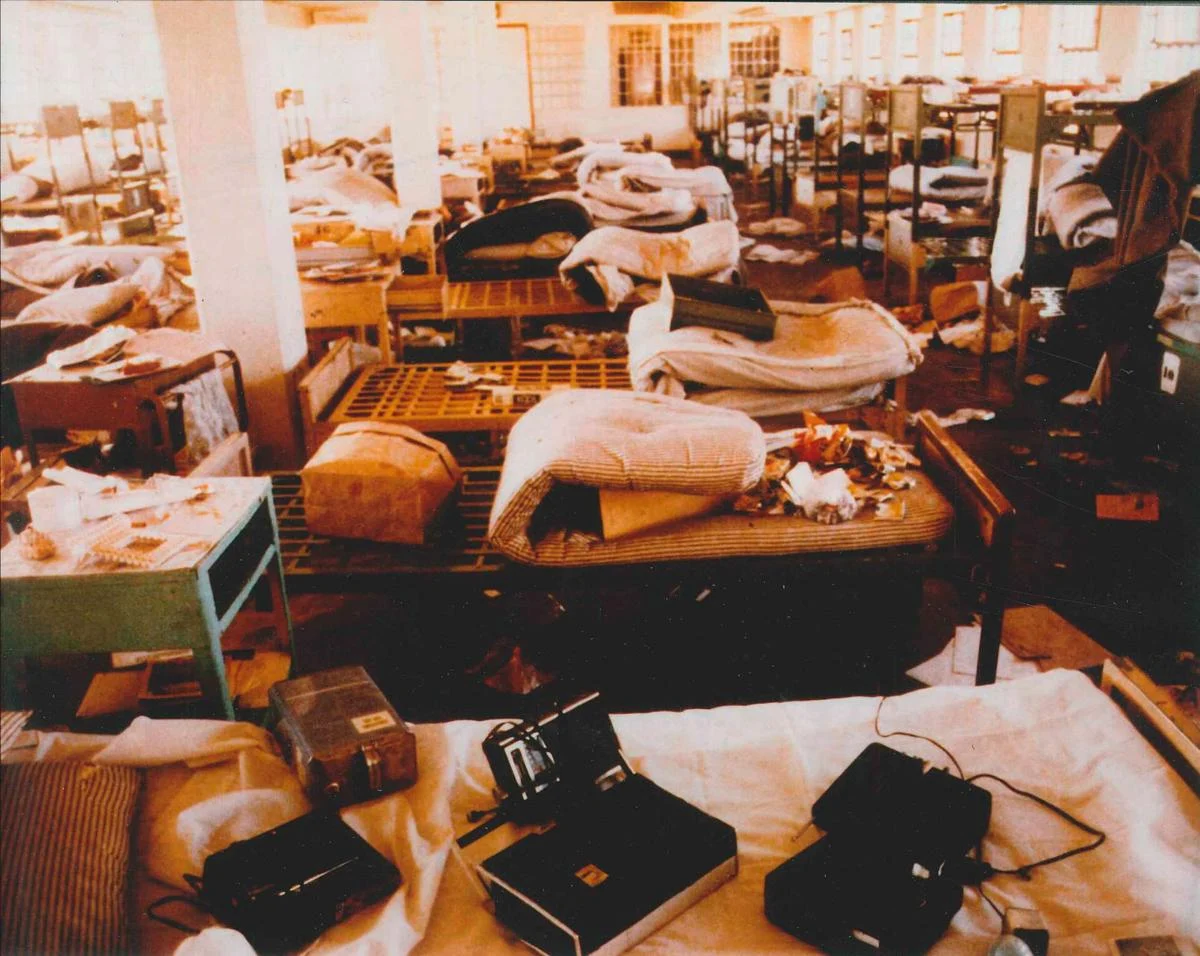
Above: President Mo Udall (D - AZ), photographed in 1980, during his final year in office (left); the aftermath of the New Mexico State Penitentiary Riot in February, 1980 (right).“Smashed a hole through my TV screen
Too much too soon if you know what I mean
I lost my mind by the count of ten
Nobody ever gonna put me back together again
You gotta knock it out rock it
You gotta sock it out rock it
You gotta rock rock rock it
Til the walls come tumbln' down” - “Till the Walls Come Tumblin’ Down” by the J. Geils Band
“We must reject the idea that every time a law's broken, society is guilty rather than the lawbreaker. It is time to restore the American precept that each individual is accountable for his actions.” - Ronald Reagan
“If renominated, I shall run to Mexico. If reelected, I shall fight extradition.” - Mo Udall
1980 would be Mo Udall’s final year as President of the United States. As if that weren’t a bitter enough pill to swallow, the year did not start off well for him or his administration.
Udall had been in politics long enough to know about those two little words that so many presidents come to dread, usually near the tail end of their final terms in office: “lame duck”. President Eisenhower had faced them after the 1958 midterms. Ditto for Kennedy in 1966. Though the latter could claim a final triumph in his final two years in office, with his masterful diplomacy in Vietnam, Udall stared down the barrel of a challenging final year in the Oval Office.
For one thing, his political capital had all but evaporated in Washington. Despite all of the goodwill that came his way following the public announcement of his diagnosis, Udall could find no way to translate that goodwill into anything actionable. Congress and the American people at large did indeed seem to see him as a lame duck, incapable of affecting further change. The attention of the political world shifted from Mo to the ongoing primary process. Mo supposed, wearily, that he couldn’t blame them. On one hand, you had Ronald Reagan and Dick Nixon tearing each other to shreds. On the other, Bob Kennedy, the Crown Prince of Camelot, was preparing to ride in on a white horse and save America from her challenges. Already, Udall could sense the sands of history beginning to shift beneath his feet. America was indeed on the eve of a “rendezvous with destiny”. And he would not be there to guide her.
Nonetheless, Udall refused to go gently “into that good night”, as the Welsh poet Dylan Thomas might have put it. In his address to the American people, announcing his diagnosis, he’d promised to remain in the White House and to keep fighting for them until the expiration of his term. He’d meant every word he said.
The first major question that Udall faced was in the area of foreign policy.
The year before, the Soviet Union had deeply involved itself in the interests of the Republic of Vietnam. The USSR’s actions, as well as its continued occupation of Afghanistan (which had begun in 1974), were ramping up tensions in the Cold War. Across America, conservatives, and even most moderates were demanding some kind of “tough” action from the United States, to rebuke the Russians. This went against President Udall’s instincts.
A firm believer in detente, he had hoped that a summit could have been scheduled between himself and First Secretary Andropov sometime in 1980. But before that could occur, Andropov was removed from power. His replacements, Suslov, Ustinov, and Gromyko demurred on possible summit talks, and generally favored a harder line with the West. Udall was loath to try and push the “boundaries” of the Cold War world, such as they stood. Memories of Cambodia were fresh in the minds of the American people, after all. So too did he resist calls to re-institute a peacetime draft of 19 and 20 year old American males, a practice which had only just concluded at the start of his administration, three years earlier.
So then, what to do about these actions?
The first idea, proposed by some in the State Department, was to enact a grain embargo on the Soviet Union. By banning the sale of American grains to the USSR, the diplomats argued, the US could save face without having to escalate actual military conflict elsewhere in the world. This was in line, they argued, with Udall’s established foreign policy, of breaking off economic ties with regimes that had violated human rights in the world. Reluctantly, Udall gave the go-ahead. On January 23rd, 1980, Udall announced the beginning of the grain embargo to the world in his State of the Union address. In that same speech, the president also announced that he would be signing legislation approving $1.5 Billion in loan guarantees to bail out the Chrysler corporation, which was going through hard times. Udall was eager to avoid layoffs in the auto industry, if at all possible.
Though these ideas were initially applauded by many (who praised Udall for “finally” taking a decisive stand against the Soviets), they were also criticized by others. On the campaign trail, both former Vice President Reagan and Senator Kennedy expressed their “regret” at the president’s decision. Both of the major parties’ eventual nominees cited possible effects on American farmers, already struggling in the economic malaise of the Seesaw Seventies, as the reason for their disagreement with the policy. Both promised that, if elected, they would end the embargo, and seek “other means of confronting the Soviet threat to world peace.”
The other major action that the Udall administration took to “confront” the Soviets was the US’s decision to diplomatically boycott the 1980 summer Olympics in Moscow. The Winter Games, hosted in Lake Placid, New York, were held earlier in the year, in February. Though hailed as well-attended and sportsmanlike, the winter Olympics also occurred under the specter of renewed Cold War tension. As the threat of a possible US-led boycott loomed, the Americans’ hockey team suffered a humiliating defeat at the hands of the heavily-favored Soviets, who would go on to win the gold medal in the round-robin style final tournament. Herb Brooks, the American team’s head coach, later recalled, in an interview with Sports Illustrated, “The eyes of the world were on us and we failed. We blew it. Me and the boys will carry that loss to our fucking graves.”
President Udall declared in March that if the Soviets did not withdraw from Afghanistan and issue an apology for their actions during the Sino-Vietnamese War of 1979, then the US and its allies would diplomatically boycott the summer games. These conditions were, of course, not met. Leading a coalition of 66 western nations, the United States did not send diplomatic envoys to accompany their athletes to the games, though their athletes were still allowed to attend and compete. This decision had more widespread approval from the American public than the grain embargo, though some pointed out that it made the Americans look like “sore losers” after their defeat on the ice in Lake Placid. The Cold War was indeed heating up once more.
Above: Posters for the Winter Games in Lake Placid and the Summer Games in Moscow.
President Udall managed to score some positive press in April, when a mass exodus of Cubans known as the “Mariel Boatlift” began. The Cubans involved, fleeing Castro’s regime in Havana, held widespread sympathy from the American public, who saw them as fleeing authoritarian communism for freedom in the United States. The boatlift would continue through the end of October, when the United States and Cuba reached an agreement to stem the tide for the rest of the year.
Less helpful for the president’s image, or for the American public’s rising anxiety, was the New Mexico State Penitentiary riot. Taking place on February 2nd and 3rd just south of Santa Fe, the event would prove to be the most violent prison riot in US history. Inmates took complete control of the prison and twelve officers were taken hostage. Several inmates were killed by other prisoners, with some being tortured and mutilated because they had previously acted as informants for prison authorities. Police regained control thirty-six hours after the riots had begun. By then, thirty-three inmates had died and more than two hundred were treated for injuries. None of the twelve officers taken hostage were killed, but seven suffered serious injuries caused by beatings and rapes.
The causes of the riot are well documented.
Author Roger Morris wrote that "the riot was a predictable incident based on an assessment of prison conditions."
Prison overcrowding and inferior prison services, common problems in many correctional facilities, were major causes of the disturbance. On the night of the riot, there were 1,156 inmates in a prison that had beds for fewer than 963. First-time non-violent prisoners were not adequately separated from repeat violent offenders Many were housed in crowded, unsanitary dormitories. PNM's food was of shockingly poor quality, a problem which was exacerbated by the prevalence of cockroaches and mice. Intestinal diseases were common. A visiting warden reported PNM as the filthiest institution he had ever seen.
Another cause was the cancellation of educational, recreational and other rehabilitative programs. When the educational and recreational programs were stopped in 1975, prisoners had to be locked down for long periods. These conditions created strong feelings of deprivation and discontent in the inmate population that would increasingly lead to violence and disorder.
The events in New Mexico closely paralleled those in a similar situation that had occurred in Attica, New York, nine years prior. Numerous activists decried the conditions the prisoners faced across the country, including country music star Johnny Cash, long a noted advocate for prison reform.
On the campaign trail for president, Ronald Reagan, quickly becoming the presumptive Republican nominee, pointed to this as “yet another breakdown of law and order under a Democratic administration”. He promised to “restore peace to America’s streets” and “end the anarchy.”
Bob Kennedy, meanwhile, reflected on the tragedy. It served as the inspiration for a new plank in his platform: criminal justice reform. Kennedy met with Cash after a concert given by the latter in Washington, D.C. The two men bonded over their mutual outrage at the conditions which led to the riot, and over their shared Christian faith. In a speech given a few days later, the Senator argued that the riot demonstrated what happens when “society forgets that true justice always rehabilitates. It heals. It does not harm or destroy. It seeks to end the cycle of violence, not to prolong it.”
Shortly thereafter, the Kennedy campaign released a comprehensive plan for prison reform and to tackle the larger issue of widespread crime in the United States in general. This will be expanded on later in the chronicle. For now, suffice it to say that RFK’s vision for improving the criminal justice system was to make it more just, more equitable, and more effective at preventing recidivism.
…
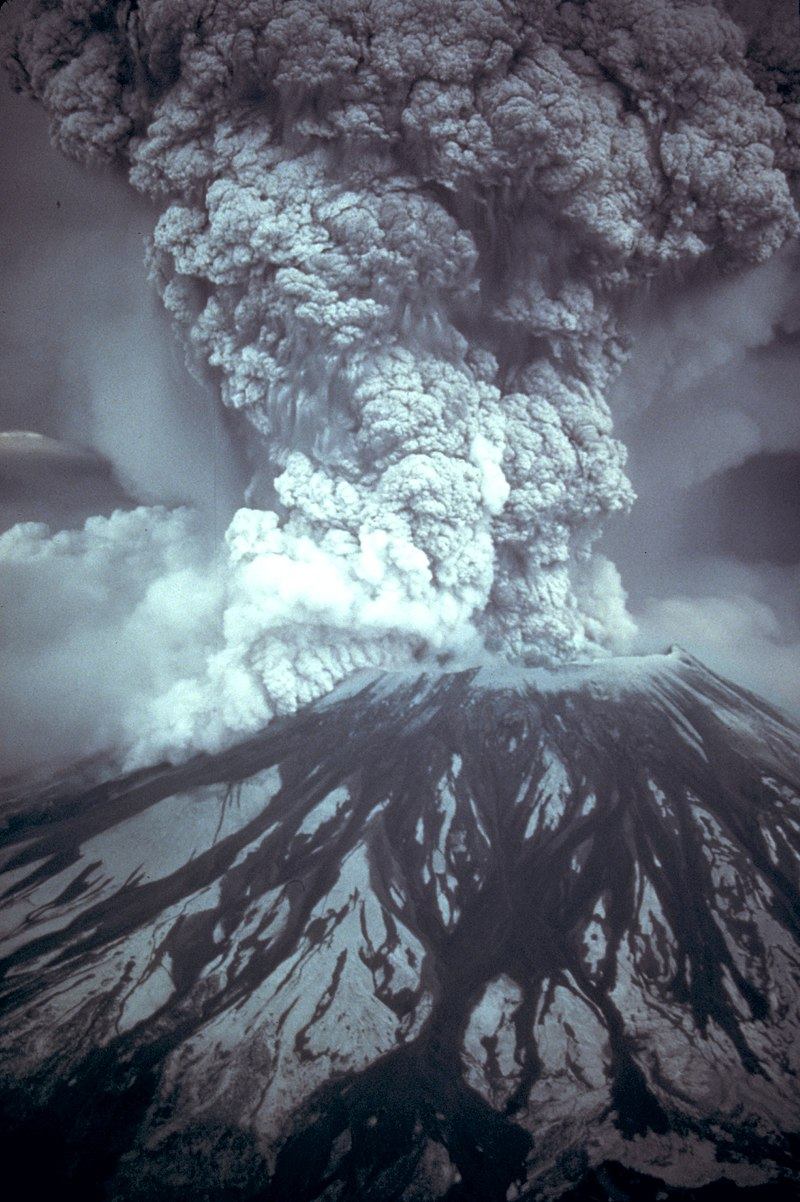

Above: Mount Saint Helens erupts on May 18th, 1980 (left); Satellite image of Hurricane Albert, which made landfall in Texas as a Category 3 Hurricane on August 10th, 1980 (right)On March 27th, 1980, a series of volcanic explosions and pyroclastic flows began at Mount St. Helens in Skamania County, Washington State. A series of initial blasts occurred from the summit and escalated until a major explosive eruption took place on May 18th at 8:32 am. The eruption was the most significant to occur in the contiguous United States since the much smaller 1915 eruption of Lassen Peak in California. It has often been declared the most disastrous volcanic eruption in U.S. history.
As the north face gave way on the morning of May 18th, a surge of partially molten rock, laden with high-pressure gas and steam, explosively discharged in a northern direction, heading towards Spirit Lake. This fiery mixture of lava and pulverized older rock overtook the landslide. The eruption generated an 80,000-foot (15 miles) high column, depositing ash across eleven U.S. states and various Canadian provinces. Concurrently, substantial snow, ice, and multiple glaciers on the volcano rapidly melted, creating a series of substantial lahars (volcanic mudslides) that extended as far as the Columbia River, nearly 50 miles to the southwest. Less severe eruptions persisted into the following day, followed by additional significant but less destructive events later in the year. The thermal energy released during the eruption equaled 26 megatons of TNT.
The cataclysm claimed the lives of approximately 57 people, among them innkeeper and World War I veteran Harry R. Truman, photographers Reid Blackburn and Robert Landsburg, and volcanologist David A. Johnston. This devastation also resulted in the reduction of hundreds of square miles to desolation, incurring over $1 billion in damage. Thousands of animals perished, and Mount St. Helens was left with a crater on its northern side. Prior to the eruption, the summit of the volcano was under the ownership of the Burlington Northern Railroad, but following the event, the railroad donated the land to the United States Forest Service. Subsequently, the region was preserved and designated as the Mount St. Helens National Volcanic Monument.
Additionally, 200 houses, 47 bridges, 15 miles of railways, and 185 miles of highway were destroyed; two people were killed indirectly in accidents that resulted from poor visibility, and two more suffered fatal heart attacks from shoveling ash.
When President Udall traveled to the Northwest on Air Force One to survey the damage, he commented that it “looked as desolate as the surface of the Moon.”
Then, in August, a rare and extremely powerful Cape Verde Hurricane formed in the Caribbean before ultimately slamming into eastern and northern Mexico and southern Texas. The first named storm and second tropical cyclone of the 1980 Atlantic hurricane season, the storm eventually named Hurricane Albert would become the one of the most destructive in history. The storm caused winds of upwards of 190 miles per hour, a record that stood until 2015 in the Western Hemisphere. It also carried with it destructive rains and storm surges. In total, Albert caused more than $1.5 Billion in damage across the various island-nations of the Caribbean, Mexico, and the United States. At least 250 people died in the storm, with thousands more losing their homes or other property in the aftermath.
In Texas, the storm surge was reported as high as 12 feet at Port Mansfield, though it may have been higher elsewhere along the Texas coast. A peak wind gust of 129 mph was also measured. Tropical storm-force winds in Corpus Christi, Texas blew roof gravel through the city, which led to substantial glass breakage to the eighteen-story Guarantee Bank Building and a twelve-story wing of the city’s hospital. The storm caused seven deaths in Texas and seventeen in Louisiana (most resulting from the crash of a helicopter evacuating workers from an offshore platform). Albert further spawned several tornadoes in Texas. One tornado alone caused $100 million in damage when it hit Austin, Texas, making it the costliest tropical cyclone-spawned tornado in recorded history. Blessedly, however, the storm mostly hit along the sparsely populated Texas coast. Due to advanced warning alerts put in place by the National Weather Service, and a carefully coordinated evacuation, led by the Texas National Guard, many, many more deaths were prevented.
Still, back in Washington, it was heart-breaking to hear the reports of the storm come in. Vice President Bentsen flew out to his home state to coordinate federal assistance in the cleanup and aftermath of the storm. The images, of Bentsen, sleeves rolled up, distributing food, medicine, and blankets with FEMA officials and the Red Cross, proved a small boon to his and Senator Kennedy’s campaign.
To many Americans, however, the disasters were disheartening, if not downright apocalyptic.
…
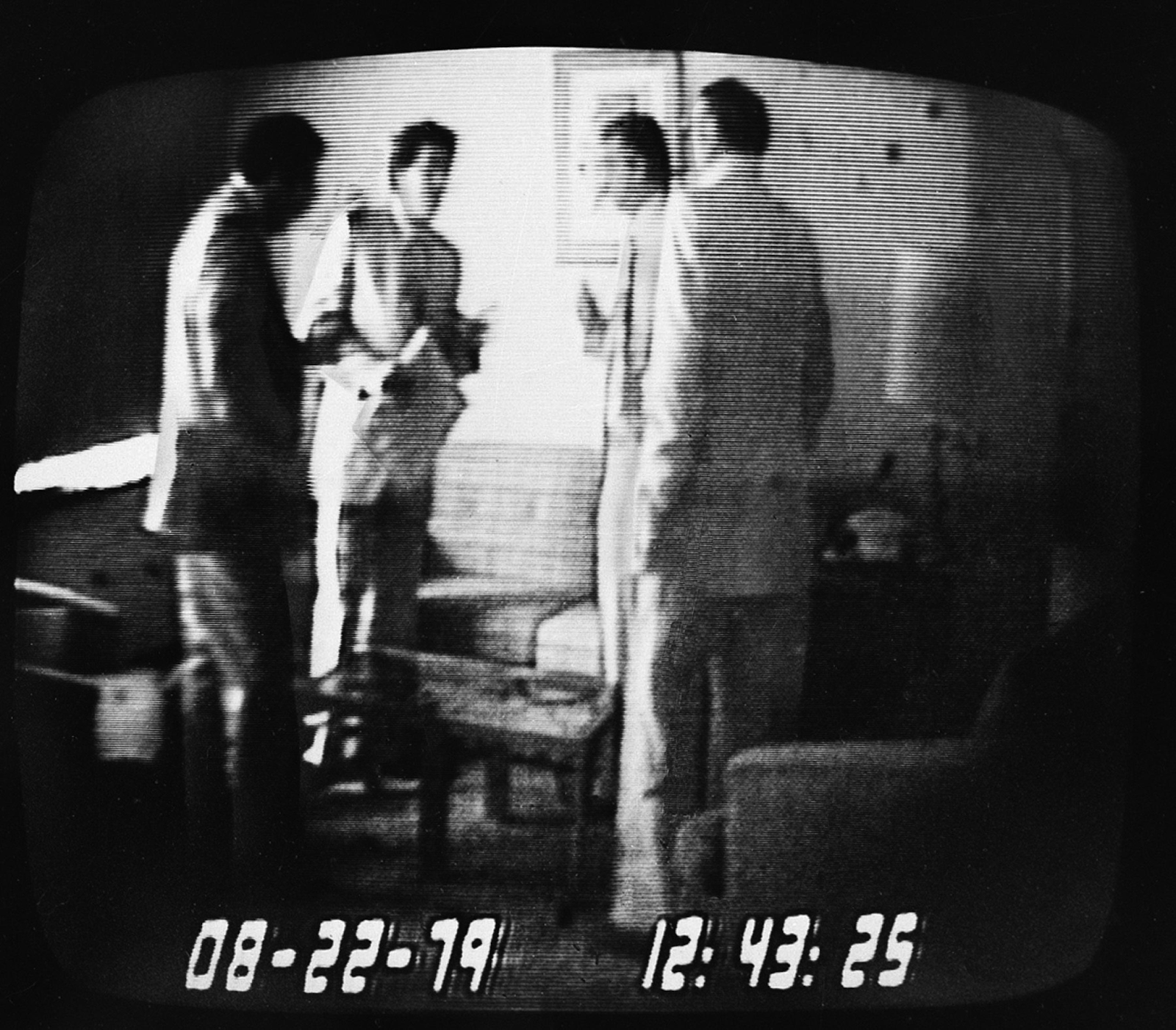
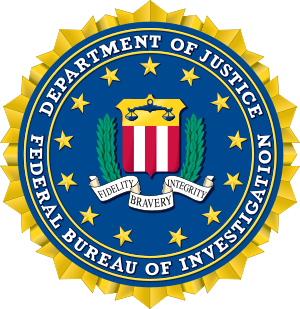
Also going on in Washington in 1980 was Abscam, an obscure, strange word (actually a mashing together of the words “Arab scam”) that would soon enter into popular consciousness, forever associated with the end of the Seesaw Seventies.
Sometimes written ABSCAM, this was an FBI sting operation in the late 70s and early 80s that led to the convictions of seven members of the United States Congress and others for bribery and corruption. The two-year investigation initially targeted trafficking in stolen property and corruption of prominent business people. Later, it would evolve into a public corruption investigation. The FBI was aided by the Justice Department and convicted con-man Mel Weinberg in videotaping politicians accepting bribes from a fictitious Arabian company in return for various political favors.
Angelo Errichetti, mayor of Camden, New Jersey, was the first government official to be caught in Operation Abscam. Errichetti first accepted the bribe in exchange for obtaining a casino license in Atlantic City for Abdul Enterprises. He then introduced Abdul to Senator Harrison Williams, who also took the bait. Errichetti also introduced Michael Myers and Raymond Lederer to the company and arranged meetings with the undercover agents. He also introduced the "Arab businessmen" to Frank Thompson Jr. By the middle of 1979, Errichetti had arranged meetings with a list of state and federal politicians willing to go in on the operation. The FBI set up video cameras in a hotel suite near New York's Idlewild Airport to record the transactions between the undercover agents and Errichetti. He was convicted on the federal bribery charges, for which he served about three years in prison.
Besides Senator Williams, oher big names who would be caught up in the investigation included Representative Frank Thompson (D - NJ); Rep. John M. Murphy (D - NY); and Richard Kelly (R - FL), the lone Republican.
Immediately following the first indictments, which were handed down in February of 1980, the investigation and subsequent trials continued to simmer in the background, always in the news, but never occupying the headlines. Republicans tried to make hay of the investigation as a campaign issue, but Kelly’s presence as a member of the GOP house caucus made this route of attack problematic. In the end, Senator Williams and all of the implicated representatives would be asked to resign, or face censure. Senator Williams would be succeeded by fellow Democrat Frank Lautenberg.
ABSCAM served, as the Hoover Affair had nine years earlier, to plant seeds of doubt into the public about trusting their government and other institutions. It exposed the seedy underbelly of American politics, and began the ball rolling on calls for serious campaign finance reform, among other activist cries. It would also serve as the basis for American Bullshit, a film made about the investigation, by director Ben Affleck in 2010.
…
(Author’s Note: The following is a slight retcon of the previous update on Canadian politics… It has been written after more careful research has been done into the circumstances surrounding Canada on the eve of 1980. Please feel free to reach out with comments or concerns!)Above: Liberal leader Allan MacEachen (left); the Canadian Flag (center); Progressive Conservative leader Flora MacDonald (right).
As its superpower neighbor to the South prepared to elect their next president, the Great White North likewise sent its citizens to the polls on February 18th, 1980. The question on every Canadian’s mind was this: who would lead their country into the 1980s?
For the past eight years, the Progressive Conservatives had held power in Ottawa. Having first won the election of 1972 against Liberal “whiz kid” John Turner, who proved incapable of convincing the Canadian public that he had effectively handled the Quebecois crises of the early 1970s, the Tories enjoyed nearly a decade of power under their moderate, well-liked Premier, Robert Stanfield. By 1980, however, the time had come for a change. By 1979, Stanfield was seventy-five years old, and ready to step down and retire from public life. A leadership election was swiftly held to field his successor.
Going into the leadership election, Claude Wagner was widely seen as the frontrunner. 50 years old, Wagner was a former Liberal Minister of Justice in the government of Quebec. Wagner's support came from party members who believed that having a Quebecois francophone leader would enable the party to expand its support in Quebec, where the party was usually soundly defeated by the Liberal Party of Canada in elections. Wagner's law-and-order image as Quebec justice minister also appealed to many on the party's right wing.
Opposing Wagner were several candidates, though. These included: Brian Mulroney, 36, a lawyer from Quebec who had grown up in a bilingual family and was also seen as a candidate who could appeal to Quebec. Mulroney had never run for public office before, however, and alienated many party members with his slick appearance and his very expensive campaign. There was Joe Clark, also 36, the Member of Parliament for Rocky Mountain, Alberta since the 1972 federal election. A “Red Tory”, in his youth, Clark had served two terms as president of the Progressive Conservative Youth wing. Prior to being elected to parliament, Clark was a journalist, political science teacher, and party worker. Jack Horner, 48, had been an MP from Alberta since 1958. A cattle rancher, Horner was widely seen as a ‘maverick” who attracted right-wing support.
Finally, there was Flora MacDonald. MacDonald, 49, a popular PC Member of Parliament from Kingston, Ontario, was the first woman to make a serious run for the PC leadership. MacDonald encouraged women of all political stripes across Canada to support her campaign by contributing one dollar. She was believed to be the front-runner amongst the Red Tory candidates going into the convention. Based on the public statements of support that she had received from delegates, many believed that she had a realistic chance of becoming leader.
This was proven when, after several inconclusive ballots failed to elect Wagner, the race was thrown open. Emphasizing her moderation, MacDonald also made the case that because the Liberals were likely to run a campaign centered around the message of “change”, the PCs could circumvent the issue by electing a woman to serve as their leader, something she argued, the Liberals were unlikely to do.
MacDonald narrowly clinched the leadership election on the next ballot, becoming the first woman to serve as the leader of a major political party in Canada. She broke a further glass ceiling when, on April 14th, 1979, Stanfield stepped down as PM and MacDonald was sworn in. She became the first female Prime Minister of Canada, and a symbol to rally behind for feminists the world over.
While the Progressive Conservatives rallied behind their history-making leader, the Liberals likewise coalesced behind theirs. Following his disastrous defeat at the hands of Stanfield in 1972, Turner swiftly stepped down as Liberal party leader. His successor was his finance minister, Allan MacEachen of Nova Scotia. A shrewd politician, with what his fellow Liberal Jean Chrieten called “very good strategic sense”, MacEachen was 58 years old on the eve of the 1980 election. He’d dutifully carried the Liberal Party banner through the lean years of the 1970s, earning the respect of PCs and Liberals alike, as well as members of the left-leaning New Democratic Party (NDP), with whom he frequently collaborated. As 1980 approached, MacEachen reached out to NDP leader Ed Broadbent and proposed a coalition government, should they prove capable of toppling the Tories. Broadbent agreed. First, however, they would need to defeat MacDonald and the Progressive Conservatives.
Generally speaking, the campaign for 1980 was relatively tame. Both MacEachen and MacDonald were well-liked and well-respected across the political spectrum. The economy, though not great, was doing better than many others in the western world. MacDonald claimed, perhaps rightly, that this was because of the high interest rates instituted by her predecessor’s government in the early years of his tenure. The decision had been unpopular at the time, but seemed to now be paying dividends. She claimed that, “A new day is dawning in Canada”. This became her campaign slogan.
In the end, the people of Canada decided to give MacDonald a chance. Her party lost a few seats overall, meaning that her majority in Parliament would be razor-thin. But, she had won. For the time being, the Progressive Conservatives would continue to lead Canada. And the nation’s first female Prime Minister had won a term of her own.
Next Time on Blue Skies in Camelot: Other World Events in 1980
Last edited:
Good chapterChapter 137 - Till the Walls Come Tumblin’ Down: Mo Udall’s Final Year in OfficeAbove: President Mo Udall (D - AZ), photographed in 1980, during his final year in office (left); the aftermath of the New Mexico State Penitentiary Riot in February, 1980 (right).


“Smashed a hole through my TV screen
Too much too soon if you know what I mean
I lost my mind by the count of ten
Nobody ever gonna put me back together again
You gotta knock it out rock it
You gotta sock it out rock it
You gotta rock rock rock it
Til the walls come tumbln' down” - “Till the Walls Come Tumblin’ Down” by the J. Geils Band
“We must reject the idea that every time a law's broken, society is guilty rather than the lawbreaker. It is time to restore the American precept that each individual is accountable for his actions.” - Ronald Reagan
“If renominated, I shall run to Mexico. If reelected, I shall fight extradition.” - Mo Udall
1980 would be Mo Udall’s final year as President of the United States. As if that weren’t a bitter enough pill to swallow, the year did not start off well for him or his administration.
Udall had been in politics long enough to know about those two little words that so many presidents come to dread, usually near the tail end of their final terms in office: “lame duck”. President Eisenhower had faced them after the 1958 midterms. Ditto for Kennedy in 1966. Though the latter could claim a final triumph in his final two years in office, with his masterful diplomacy in Vietnam, Udall stared down the barrel of a challenging final year in the Oval Office.
For one thing, his political capital had all but evaporated in Washington. Despite all of the goodwill that came his way following the public announcement of his diagnosis, Udall could find no way to translate that goodwill into anything actionable. Congress and the American people at large did indeed seem to see him as a lame duck, incapable of affecting further change. The attention of the political world shifted from Mo to the ongoing primary process. Mo supposed, wearily, that he couldn’t blame them. On one hand, you had Ronald Reagan and Dick Nixon tearing each other to shreds. On the other, Bob Kennedy, the Crown Prince of Camelot, was preparing to ride in on a white horse and save America from her challenges. Already, Udall could sense the sands of history beginning to shift beneath his feet. America was indeed on the eve of a “rendezvous with destiny”. And he would not be there to guide her.
Nonetheless, Udall refused to go gently “into that good night”, as the Welsh poet Dylan Thomas might have put it. In his address to the American people, announcing his diagnosis, he’d promised to remain in the White House and to keep fighting for them until the expiration of his term. He’d meant every word he said.
The first major question that Udall faced was in the area of foreign policy.
The year before, the Soviet Union had deeply involved itself in the interests of the Republic of Vietnam. The USSR’s actions, as well as its continued occupation of Afghanistan (which had begun in 1974), were ramping up tensions in the Cold War. Across America, conservatives, and even most moderates were demanding some kind of “tough” action from the United States, to rebuke the Russians. This went against President Udall’s instincts.
A firm believer in detente, he had hoped that a summit could have been scheduled between himself and First Secretary Andropov sometime in 1980. But before that could occur, Andropov was removed from power. His replacements, Suslov, Ustinov, and Gromyko demurred on possible summit talks, and generally favored a harder line with the West. Udall was loath to try and push the “boundaries” of the Cold War world, such as they stood. Memories of Cambodia were fresh in the minds of the American people, after all. So too did he resist calls to re-institute a peacetime draft of 19 and 20 year old American males, a practice which had only just concluded at the start of his administration, three years earlier.
So then, what to do about these actions?
The first idea, proposed by some in the State Department, was to enact a grain embargo on the Soviet Union. By banning the sale of American grains to the USSR, the diplomats argued, the US could save face without having to escalate actual military conflict elsewhere in the world. This was in line, they argued, with Udall’s established foreign policy, of breaking off economic ties with regimes that had violated human rights in the world. Reluctantly, Udall gave the go-ahead. On January 23rd, 1980, Udall announced the beginning of the grain embargo to the world in his State of the Union address. In that same speech, the president also announced that he would be signing legislation approving $1.5 Billion in loan guarantees to bail out the Chrysler corporation, which was going through hard times. Udall was eager to avoid layoffs in the auto industry, if at all possible.
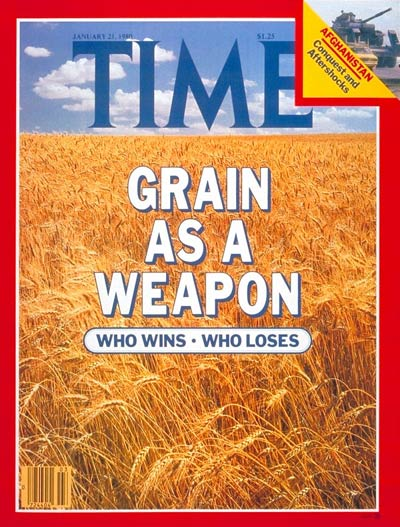

Though these ideas were initially applauded by many (who praised Udall for “finally” taking a decisive stand against the Soviets), they were also criticized by others. On the campaign trail, both former Vice President Reagan and Senator Kennedy expressed their “regret” at the president’s decision. Both of the major parties’ eventual nominees cited possible effects on American farmers, already struggling in the economic malaise of the Seesaw Seventies, as the reason for their disagreement with the policy. Both promised that, if elected, they would end the embargo, and seek “other means of confronting the Soviet threat to world peace.”
The other major action that the Udall administration took to “confront” the Soviets was the US’s decision to boycott the 1980 summer Olympics in Moscow. The Winter Games, hosted in Lake Placid, New York, were held earlier in the year, in February. Though hailed as well-attended and sportsmanlike, the winter Olympics also occurred under the specter of renewed Cold War tension. As the threat of a US-led boycott loomed, the Americans’ hockey team suffered a humiliating defeat at the hands of the heavily-favored Soviets, who would go on to win the gold medal in the round-robin style final tournament. Herb Brooks, the American team’s head coach, later recalled, in an interview with Sports Illustrated, “The eyes of the world were on us and we failed. We blew it. Me and the boys will carry that loss to our fucking graves.”
President Udall declared in March that if the Soviets did not withdraw from Afghanistan and issue an apology for their actions during the Sino-Vietnamese War of 1979, then the US and its allies would boycott the summer games. These conditions were, of course, not met. Leading a coalition of 66 western nations, the United States hosted the so-called “Liberty Bell Games” in Philadelphia, as an alternative for that year’s events. This decision had more widespread approval from the American public than the grain embargo, though some pointed out that it made the Americans look like “sore losers” after their defeat on the ice in Lake Placid. The Cold War was indeed heating up once more.

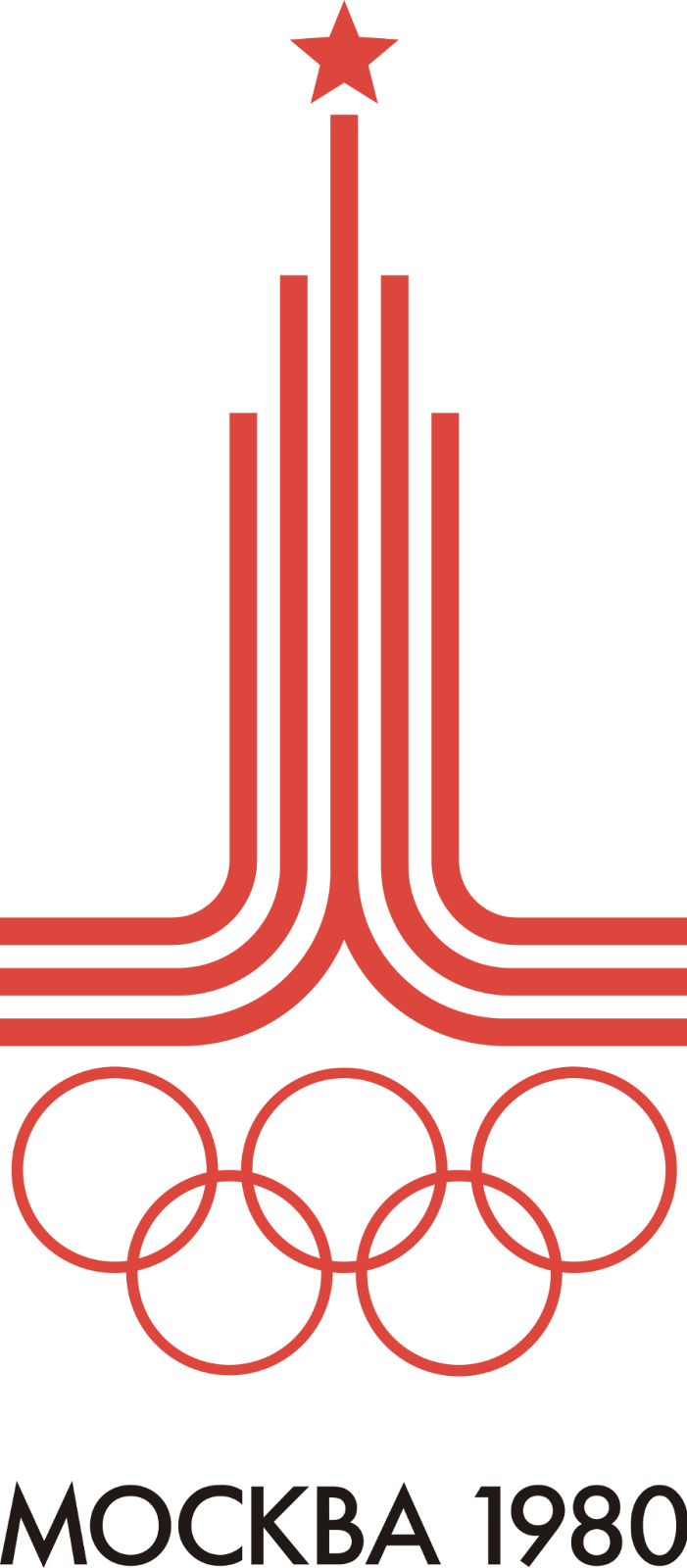
Above: Posters for the Winter Games in Lake Placid and the Summer Games in Moscow.
President Udall managed to score some positive press in April, when a mass exodus of Cubans known as the “Mariel Boatlift” began. The Cubans involved, fleeing Castro’s regime in Havana, held widespread sympathy from the American public, who saw them as fleeing authoritarian communism for freedom in the United States. The boatlift would continue through the end of October, when the United States and Cuba reached an agreement to stem the tide for the rest of the year.
Less helpful for the president’s image, or for the American public’s rising anxiety, was the New Mexico State Penitentiary riot. Taking place on February 2nd and 3rd just south of Santa Fe, the event would prove to be the most violent prison riot in US history. Inmates took complete control of the prison and twelve officers were taken hostage. Several inmates were killed by other prisoners, with some being tortured and mutilated because they had previously acted as informants for prison authorities. Police regained control thirty-six hours after the riots had begun. By then, thirty-three inmates had died and more than two hundred were treated for injuries. None of the twelve officers taken hostage were killed, but seven suffered serious injuries caused by beatings and rapes.
The causes of the riot are well documented.
Author Roger Morris wrote that "the riot was a predictable incident based on an assessment of prison conditions."
Prison overcrowding and inferior prison services, common problems in many correctional facilities, were major causes of the disturbance. On the night of the riot, there were 1,156 inmates in a prison that had beds for fewer than 963. First-time non-violent prisoners were not adequately separated from repeat violent offenders Many were housed in crowded, unsanitary dormitories. PNM's food was of shockingly poor quality, a problem which was exacerbated by the prevalence of cockroaches and mice. Intestinal diseases were common. A visiting warden reported PNM as the filthiest institution he had ever seen.
Another cause was the cancellation of educational, recreational and other rehabilitative programs. When the educational and recreational programs were stopped in 1975, prisoners had to be locked down for long periods. These conditions created strong feelings of deprivation and discontent in the inmate population that would increasingly lead to violence and disorder.
The events in New Mexico closely paralleled those in a similar situation that had occurred in Attica, New York, nine years prior. Numerous activists decried the conditions the prisoners faced across the country, including country music star Johnny Cash, long a noted advocate for prison reform.
On the campaign trail for president, Ronald Reagan, quickly becoming the presumptive Republican nominee, pointed to this as “yet another breakdown of law and order under a Democratic administration”. He promised to “restore peace to America’s streets” and “end the anarchy.”
Bob Kennedy, meanwhile, reflected on the tragedy. It served as the inspiration for a new plank in his platform: criminal justice reform. Kennedy met with Cash after a concert given by the latter in Washington, D.C. The two men bonded over their mutual outrage at the conditions which led to the riot, and over their shared Christian faith. In a speech given a few days later, the Senator argued that the riot demonstrated what happens when “society forgets that true justice always rehabilitates. It heals. It does not harm or destroy. It seeks to end the cycle of violence, not to prolong it.”
Shortly thereafter, the Kennedy campaign released a comprehensive plan for prison reform and to tackle the larger issue of widespread crime in the United States in general. This will be expanded on later in the chronicle. For now, suffice it to say that RFK’s vision for improving the criminal justice system was to make it more just, more equitable, and more effective at preventing recidivism.
…Above: Mount Saint Helens erupts on May 18th, 1980 (left); Satellite image of Hurricane Albert, which made landfall in Texas as a Category 3 Hurricane on August 10th, 1980 (right)


On March 27th, 1980, a series of volcanic explosions and pyroclastic flows began at Mount St. Helens in Skamania County, Washington State. A series of initial blasts occurred from the summit and escalated until a major explosive eruption took place on May 18th at 8:32 am. The eruption was the most significant to occur in the contiguous United States since the much smaller 1915 eruption of Lassen Peak in California. It has often been declared the most disastrous volcanic eruption in U.S. history.
As the north face gave way on the morning of May 18th, a surge of partially molten rock, laden with high-pressure gas and steam, explosively discharged in a northern direction, heading towards Spirit Lake. This fiery mixture of lava and pulverized older rock overtook the landslide. The eruption generated an 80,000-foot (15 miles) high column, depositing ash across eleven U.S. states and various Canadian provinces. Concurrently, substantial snow, ice, and multiple glaciers on the volcano rapidly melted, creating a series of substantial lahars (volcanic mudslides) that extended as far as the Columbia River, nearly 50 miles to the southwest. Less severe eruptions persisted into the following day, followed by additional significant but less destructive events later in the year. The thermal energy released during the eruption equaled 26 megatons of TNT.
The cataclysm claimed the lives of approximately 57 people, among them innkeeper and World War I veteran Harry R. Truman, photographers Reid Blackburn and Robert Landsburg, and volcanologist David A. Johnston. This devastation also resulted in the reduction of hundreds of square miles to desolation, incurring over $1 billion in damage. Thousands of animals perished, and Mount St. Helens was left with a crater on its northern side. Prior to the eruption, the summit of the volcano was under the ownership of the Burlington Northern Railroad, but following the event, the railroad donated the land to the United States Forest Service. Subsequently, the region was preserved and designated as the Mount St. Helens National Volcanic Monument.
Additionally, 200 houses, 47 bridges, 15 miles of railways, and 185 miles of highway were destroyed; two people were killed indirectly in accidents that resulted from poor visibility, and two more suffered fatal heart attacks from shoveling ash.
When President Udall traveled to the Northwest on Air Force One to survey the damage, he commented that it “looked as desolate as the surface of the Moon.”
Then, in August, a rare and extremely powerful Cape Verde Hurricane formed in the Caribbean before ultimately slamming into eastern and northern Mexico and southern Texas. The first named storm and second tropical cyclone of the 1980 Atlantic hurricane season, the storm eventually named Hurricane Albert would become the one of the most destructive in history. The storm caused winds of upwards of 190 miles per hour, a record that stood until 2015 in the Western Hemisphere. It also carried with it destructive rains and storm surges. In total, Albert caused more than $1.5 Billion in damage across the various island-nations of the Caribbean, Mexico, and the United States. At least 250 people died in the storm, with thousands more losing their homes or other property in the aftermath.
In Texas, the storm surge was reported as high as 12 feet at Port Mansfield, though it may have been higher elsewhere along the Texas coast. A peak wind gust of 129 mph was also measured. Tropical storm-force winds in Corpus Christi, Texas blew roof gravel through the city, which led to substantial glass breakage to the eighteen-story Guarantee Bank Building and a twelve-story wing of the city’s hospital. The storm caused seven deaths in Texas and seventeen in Louisiana (most resulting from the crash of a helicopter evacuating workers from an offshore platform). Albert further spawned several tornadoes in Texas. One tornado alone caused $100 million in damage when it hit Austin, Texas, making it the costliest tropical cyclone-spawned tornado in recorded history. Blessedly, however, the storm mostly hit along the sparsely populated Texas coast. Due to advanced warning alerts put in place by the National Weather Service, and a carefully coordinated evacuation, led by the Texas National Guard, many, many more deaths were prevented.
Still, back in Washington, it was heart-breaking to hear the reports of the storm come in. Vice President Bentsen flew out to his home state to coordinate federal assistance in the cleanup and aftermath of the storm. The images, of Bentsen, sleeves rolled up, distributing food, medicine, and blankets with FEMA officials and the Red Cross, proved a small boon to his and Senator Kennedy’s campaign.
To many Americans, however, the disasters were disheartening, if not downright apocalyptic.
…


Also going on in Washington in 1980 was Abscam, an obscure, strange word (actually a mashing together of the words “Arab scam”) that would soon enter into popular consciousness, forever associated with the end of the Seesaw Seventies.
Sometimes written ABSCAM, this was an FBI sting operation in the late 70s and early 80s that led to the convictions of seven members of the United States Congress and others for bribery and corruption. The two-year investigation initially targeted trafficking in stolen property and corruption of prominent business people. Later, it would evolve into a public corruption investigation. The FBI was aided by the Justice Department and convicted con-man Mel Weinberg in videotaping politicians accepting bribes from a fictitious Arabian company in return for various political favors.
Angelo Errichetti, mayor of Camden, New Jersey, was the first government official to be caught in Operation Abscam. Errichetti first accepted the bribe in exchange for obtaining a casino license in Atlantic City for Abdul Enterprises. He then introduced Abdul to Senator Harrison Williams, who also took the bait. Errichetti also introduced Michael Myers and Raymond Lederer to the company and arranged meetings with the undercover agents. He also introduced the "Arab businessmen" to Frank Thompson Jr. By the middle of 1979, Errichetti had arranged meetings with a list of state and federal politicians willing to go in on the operation. The FBI set up video cameras in a hotel suite near New York's Idlewild Airport to record the transactions between the undercover agents and Errichetti. He was convicted on the federal bribery charges, for which he served about three years in prison.
Besides Senator Williams, oher big names who would be caught up in the investigation included Representative Frank Thompson (D - NJ); Rep. John M. Murphy (D - NY); and Richard Kelly (R - FL), the lone Republican.
Immediately following the first indictments, which were handed down in February of 1980, the investigation and subsequent trials continued to simmer in the background, always in the news, but never occupying the headlines. Republicans tried to make hay of the investigation as a campaign issue, but Kelly’s presence as a member of the GOP house caucus made this route of attack problematic. In the end, Senator Williams and all of the implicated representatives would be asked to resign, or face censure. Senator Williams would be succeeded by fellow Democrat Frank Lautenberg.
ABSCAM served, as the Hoover Affair had nine years earlier, to plant seeds of doubt into the public about trusting their government and other institutions. It exposed the seedy underbelly of American politics, and began the ball rolling on calls for serious campaign finance reform, among other activist cries. It would also serve as the basis for American Bullshit, a film made about the investigation, by director Ben Affleck in 2010.
…(Author’s Note: The following is a slight retcon of the previous update on Canadian politics… It has been written after more careful research has been done into the circumstances surrounding Canada on the eve of 1980. Please feel free to reach out with comments or concerns!)
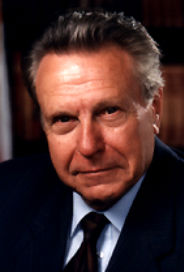
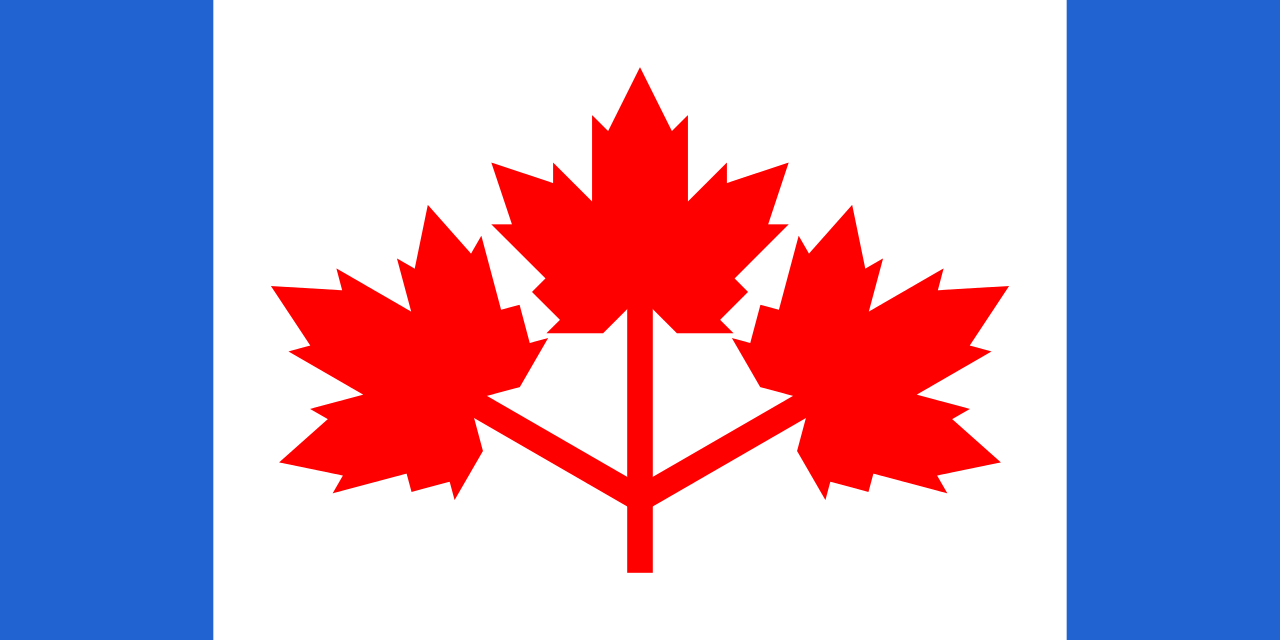

Above: Liberal leader Allan MacEachen (left); the Canadian Flag (center); Progressive Conservative leader Flora MacDonald (right).
As its superpower neighbor to the South prepared to elect their next president, the Great White North likewise sent its citizens to the polls on February 18th, 1980. The question on every Canadian’s mind was this: who would lead their country into the 1980s?
For the past eight years, the Progressive Conservatives had held power in Ottawa. Having first won the election of 1972 against Liberal “whiz kid” John Turner, who proved incapable of convincing the Canadian public that he had effectively handled the Quebecois crises of the early 1970s, the Tories enjoyed nearly a decade of power under their moderate, well-liked Premier, Robert Stanfield. By 1980, however, the time had come for a change. By 1979, Stanfield was seventy-five years old, and ready to step down and retire from public life. A leadership election was swiftly held to field his successor.
Going into the leadership election, Claude Wagner was widely seen as the frontrunner. 50 years old, Wagner was a former Liberal Minister of Justice in the government of Quebec. Wagner's support came from party members who believed that having a Quebecois francophone leader would enable the party to expand its support in Quebec, where the party was usually soundly defeated by the Liberal Party of Canada in elections. Wagner's law-and-order image as Quebec justice minister also appealed to many on the party's right wing.
Opposing Wagner were several candidates, though. These included: Brian Mulroney, 36, a lawyer from Quebec who had grown up in a bilingual family and was also seen as a candidate who could appeal to Quebec. Mulroney had never run for public office before, however, and alienated many party members with his slick appearance and his very expensive campaign. There was Joe Clark, also 36, the Member of Parliament for Rocky Mountain, Alberta since the 1972 federal election. A “Red Tory”, in his youth, Clark had served two terms as president of the Progressive Conservative Youth wing. Prior to being elected to parliament, Clark was a journalist, political science teacher, and party worker. Jack Horner, 48, had been an MP from Alberta since 1958. A cattle rancher, Horner was widely seen as a ‘maverick” who attracted right-wing support.
Finally, there was Flora MacDonald. MacDonald, 49, a popular PC Member of Parliament from Kingston, Ontario, was the first woman to make a serious run for the PC leadership. MacDonald encouraged women of all political stripes across Canada to support her campaign by contributing one dollar. She was believed to be the front-runner amongst the Red Tory candidates going into the convention. Based on the public statements of support that she had received from delegates, many believed that she had a realistic chance of becoming leader.
This was proven when, after several inconclusive ballots failed to elect Wagner, the race was thrown open. Emphasizing her moderation, MacDonald also made the case that because the Liberals were likely to run a campaign centered around the message of “change”, the PCs could circumvent the issue by electing a woman to serve as their leader, something she argued, the Liberals were unlikely to do.
MacDonald narrowly clinched the leadership election on the next ballot, becoming the first woman to serve as the leader of a major political party in Canada. She broke a further glass ceiling when, on April 14th, 1979, Stanfield stepped down as PM and MacDonald was sworn in. She became the first female Prime Minister of Canada, and a symbol to rally behind for feminists the world over.
While the Progressive Conservatives rallied behind their history-making leader, the Liberals likewise coalesced behind theirs. Following his disastrous defeat at the hands of Stanfield in 1972, Turner swiftly stepped down as Liberal party leader. His successor was his finance minister, Allan MacEachen of Nova Scotia. A shrewd politician, with what his fellow Liberal Jean Chrieten called “very good strategic sense”, MacEachen was 58 years old on the eve of the 1980 election. He’d dutifully carried the Liberal Party banner through the lean years of the 1970s, earning the respect of PCs and Liberals alike, as well as members of the left-leaning New Democratic Party (NDP), with whom he frequently collaborated. As 1980 approached, MacEachen reached out to NDP leader Ed Broadbent and proposed a coalition government, should they prove capable of toppling the Tories. Broadbent agreed. First, however, they would need to defeat MacDonald and the Progressive Conservatives.
Generally speaking, the campaign for 1980 was relatively tame. Both MacEachen and MacDonald were well-liked and well-respected across the political spectrum. The economy, though not great, was doing better than many others in the western world. MacDonald claimed, perhaps rightly, that this was because of the high interest rates instituted by her predecessor’s government in the early years of his tenure. The decision had been unpopular at the time, but seemed to now be paying dividends. She claimed that, “A new day is dawning in Canada”. This became her campaign slogan.
In the end, the people of Canada decided to give MacDonald a chance. Her party lost a few seats overall, meaning that her majority in Parliament would be razor-thin. But, she had won. For the time being, the Progressive Conservatives would continue to lead Canada. And the nation’s first female Prime Minister had won a term of her own.
Next Time on Blue Skies in Camelot: Other World Events in 1980
MacEachen and MacDonald are definitely interesting choices for a Canadian election in 1980
Thank you! I wanted to try and pick some figured from my research who don't seem to get brought up much in timelines.MacEachen and MacDonald are definitely interesting choices for a Canadian election in 1980
MacEachen especially is a very obscure figure so well done on that oneThank you! I wanted to try and pick some figured from my research who don't seem to get brought up much in timelines.
Great chapter! Sad to hear about all these natural disasters. Had no idea about them in 1980 until now😟 I'm guessing the grain ban is something Carter did IOTL?
That prison riot was crazy! Thanks for sharing it.
Enjoyed reading about the Canadian election too. Always had a soft spot for Canada
That prison riot was crazy! Thanks for sharing it.
Enjoyed reading about the Canadian election too. Always had a soft spot for Canada
Though may I ask why you had the hockey team lose?Thank you!
Very good chapter. I wonder what Reagan thinks of his opponent’s criminal justice reform plan?
Probably think it's soft on crimeVery good chapter. I wonder what Reagan thinks of his opponent’s criminal justice reform plan?
The author did say it was pretty comprehensive. Maybe there's elements of it that Reagan agrees with?Probably think it's soft on crime
If that happens I'll be very surprisedThe author did say it was pretty comprehensive. Maybe there's elements of it that Reagan agrees with?
Essentially, it's a way to look "tough" on foreign policy without having to to commit to very much policy-wise.What is it with Democrat presidents and boycotting the Moscow Olympics?
Thanks!MacEachen especially is a very obscure figure so well done on that one
Thank you 😁 Glad to hear that you enjoyed it. The grain ban is, in fact, inspired by an OTL policy of Carter's.Great chapter! Sad to hear about all these natural disasters. Had no idea about them in 1980 until now😟 I'm guessing the grain ban is something Carter did IOTL?
That prison riot was crazy! Thanks for sharing it.
Enjoyed reading about the Canadian election too. Always had a soft spot for Canada
I felt like in most timelines, the Soviets would probably have won in Lake Placid. They were the heavy favorites, after all. Here, TBH, I felt like it would make for a pop culture moment to help add to the feeling of the Cold War heating back up for the average American.Though may I ask why you had the hockey team lose?
Very good chapter. I wonder what Reagan thinks of his opponent’s criminal justice reform plan?
Probably think it's soft on crime
Reagan would absolutely agree with the parts that advocate for increased funding for police departments and prisons. He would likely disagree with just about every way that RFK recommends allocating those funds, however.The author did say it was pretty comprehensive. Maybe there's elements of it that Reagan agrees with?
Why didn't Udall impose a diplomatic boycott instead? Sends a message and doesn't punish hundreds of athletes for something they didn't do.Essentially, it's a way to look "tough" on foreign policy without having to to commit to very much policy-wise.
Is Kennedy's criminal justice prison plan going to be the Blue Skies stand in for the 1994 Crime Bill of OTL but less controversial and presumably without the "three strikes law"?Essentially, it's a way to look "tough" on foreign policy without having to to commit to very much policy-wise.
Thanks!
Thank you 😁 Glad to hear that you enjoyed it. The grain ban is, in fact, inspired by an OTL policy of Carter's.
I felt like in most timelines, the Soviets would probably have won in Lake Placid. They were the heavy favorites, after all. Here, TBH, I felt like it would make for a pop culture moment to help add to the feeling of the Cold War heating back up for the average American.
Reagan would absolutely agree with the parts that advocate for increased funding for police departments and prisons. He would likely disagree with just about every way that RFK recommends allocating those funds, however.
Share: